This is the weekend edition of TheMarioBlog and will be updated as needed. The next blog post is Monday, June 30.




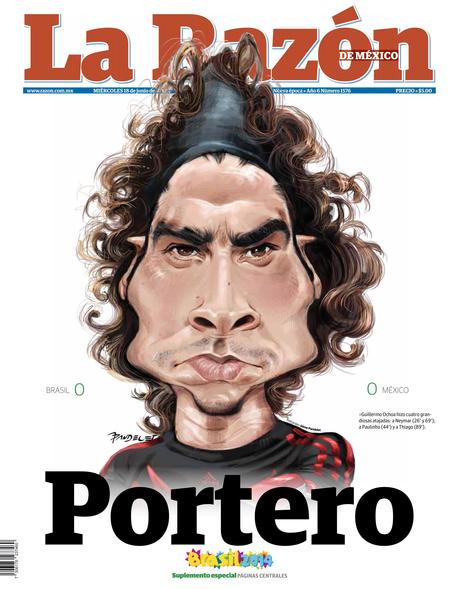
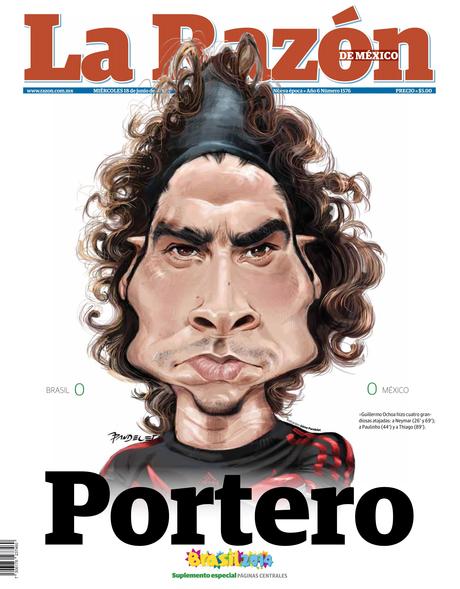
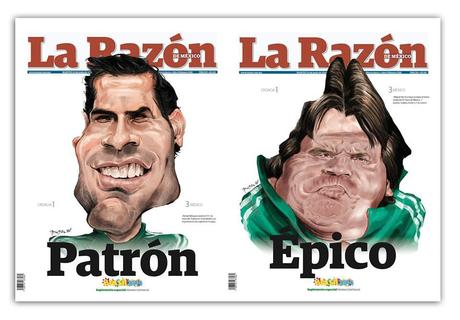
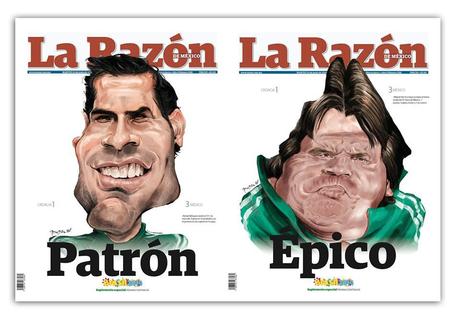
Recent front pages of Mexico's La Razon with Jaime Pandelet illustrations for the World Cup 2014
Jaime Pandelet had his first illustration published when he was only 16 in 1974. It was in a monthly magazine in his native Sevilla. By then, he knew that caricatures, illustrations and visual journalism were what he wanted to do for life.
His wishes have come through, much to the delight of readers for such Spanish publications as ABC de Sevilla, Interviu, El Mundo, Marca, Huffington Post (España), Expansión, Rolling Stone (España) and, most recently, Mexico's La Razón.
Now that I have seen the quality and texture of Jaime's illustrations, I was curious to talk to him about the state of illustrations generally as part of visual journalism today.
Sadly, as newspaper staffs slash staffs worldwide, it is no surprise that sometimes graphics departments, and, especially illustrators, are the first to go under the knife.
Yet, we know that readers love illustrations, both in print and via digital platforms.
Illustrations, when they are true to the story, are our main door to get into stories. The good illustrations seduce, engage and are just the nudge we need to read that long narrative on an obscure or abstract topic.
A few questions for Jaime


Self caricature by Jaime Pandelet
Mario: How do you see the state of illustrations in newspapers today?
Jaime:
There is no question that the reality today is less time for us to consume information. We must decide how distribute the time available in a variety of activities. The time we devoted to reading newspapers in the 60s, for example, is impossible today. As a result, editors in newsrooms are forced to make decisions, to present that which is essential to the story. This, I believe, is good for illustrations and for graphics generally. Today's printed newspapers, use illustrations and graphics to their great advantage, as the best substitute and best ally of textual information.
Mario: Are readers appreciative of what illustrations and graphics bring to a story?
Jaime:
Today's reader appreciates and values the synthesis that illustrations and graphics offer for stories. From an explanatory infographic to even a stereotypical illustration of an individual that represents an attitude that plays in or out of the acceptable. In my part of the world here in Andalucia, we say that when we present something in a way that benefits comprehension, it is sort of like a stream of fresh air, and that is how I understand the art of caricatures and illustrations for the media for which I create them. It is a positive effect to play a part in the inertia that is the medium in question.
Mario: How do you see the use of illustrations as presented via digital platforms?
Jaime:
I believe that the gap that previously existed between the printed and digital presentation of illustrations is less today. And I also believe that that minimal gap will become even less in the years to come.
Pages We Like
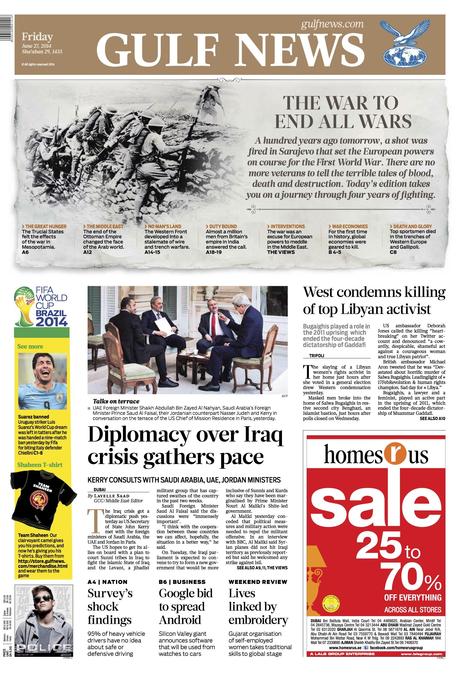
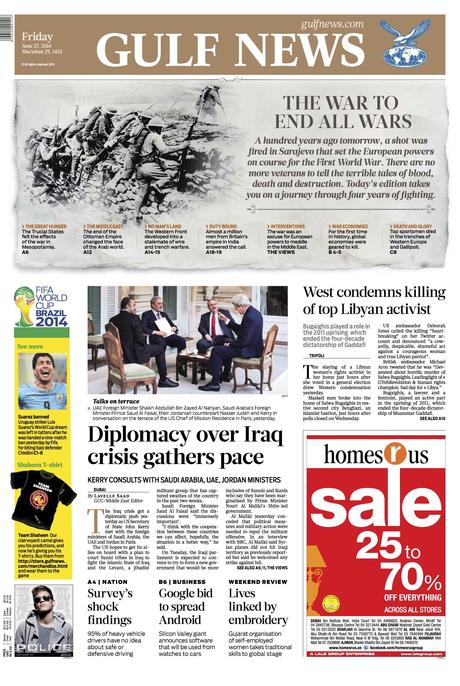
Here is the front page of today's Gulf News, introducing a special series about the 100th anniversary of World War I
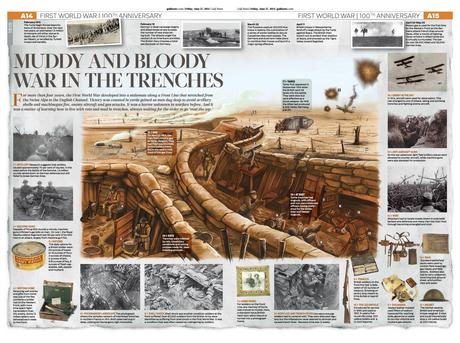
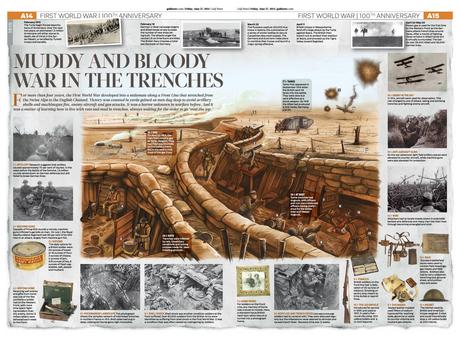
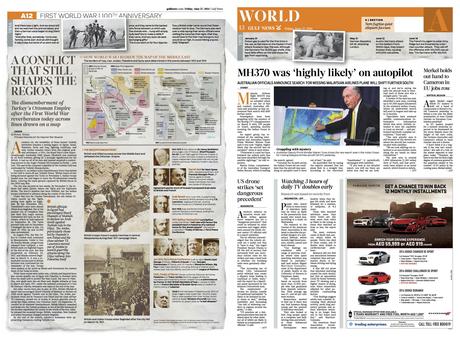
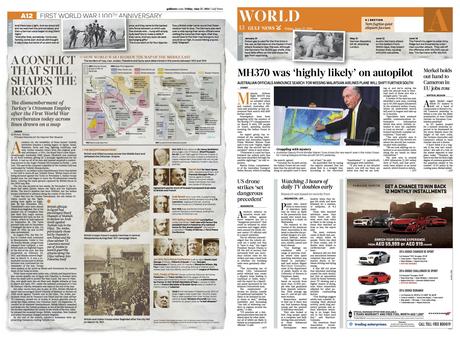
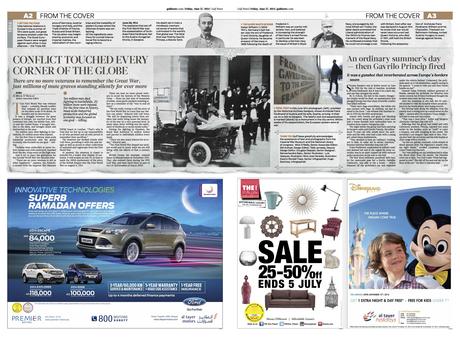
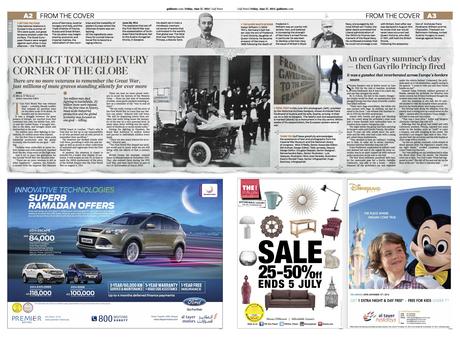
It is the 100th anniversary of World War I, and the Gulf News of Dubai carries a special package complete with a timeline of the War that runs thru every page of the newspaper, each section emphasizing the impact of the War in its area: business, sports, views, Europe, Asia, The Region.
A wonderful effort under the leadership of editor Abdul Hamid Ahmad and design director Miguel Gomez and their team.
Some lean back reading for your weekend


Watch an android read the news. Better than your local anchor?
First paragraph:
Tired of newscasters spewing banter? Try these freaky lifelike newscasters billed by scientists in Japan as the world’s first news-reading androids.
NYT ends ‘The Lede’ blog
http://www.poynter.org/latest-news/mediawire/256904/nyt-ends-the-lede-blog/?utm_source=API%27s+Need+to+Know+newsletter&utm_campaign=92b82d9026-Need_to_Know_June_26_20146_26_2014&utm_medium=email&utm_term=0_e3bf78af04-92b82d9026-31701869
First paragraph:
The New York Times’ Lede blog is going away, but its “great breaking news content” will “instead be packaged differently and found in the relevant section of our site,” Times spokesperson Eileen Murphy tells Poynter.
Tiny Letters to the Web We Miss
https://medium.com/message/tiny-letters-to-the-web-we-miss-6a695a6316c
First paragraph:
Something is missing from this blogger reunion in our inboxIt has been more than a decade since I last saw a web ring. The Internet of Newsletters hints at something interesting about the rise of TinyLetter over the past year. A specific group of people are signing up for the service. They met over blogs several years ago, or even earlier, at IRL meet ups for various Usenet groups or events organized by NTK.
Millennials Are Old News — Here’s Everything You Should Know About Generation Z
http://www.businessinsider.com/generation-z-spending-habits-2014-6
Highlights:
Marketers are beginning to target a new crop of young people who are rapidly growing in number and influence: Generation Z.
They are digitally over-connected. Gen Z-ers multitask across at least five screens daily and spend 41% of their time outside of school with computers or mobile devices, compared to 22% 10 years ago, according to the Sparks & Honey report. "They suffer from FOMO (fear of missing out) more than millennials, so being culturally connected is critical," researchers wrote.

